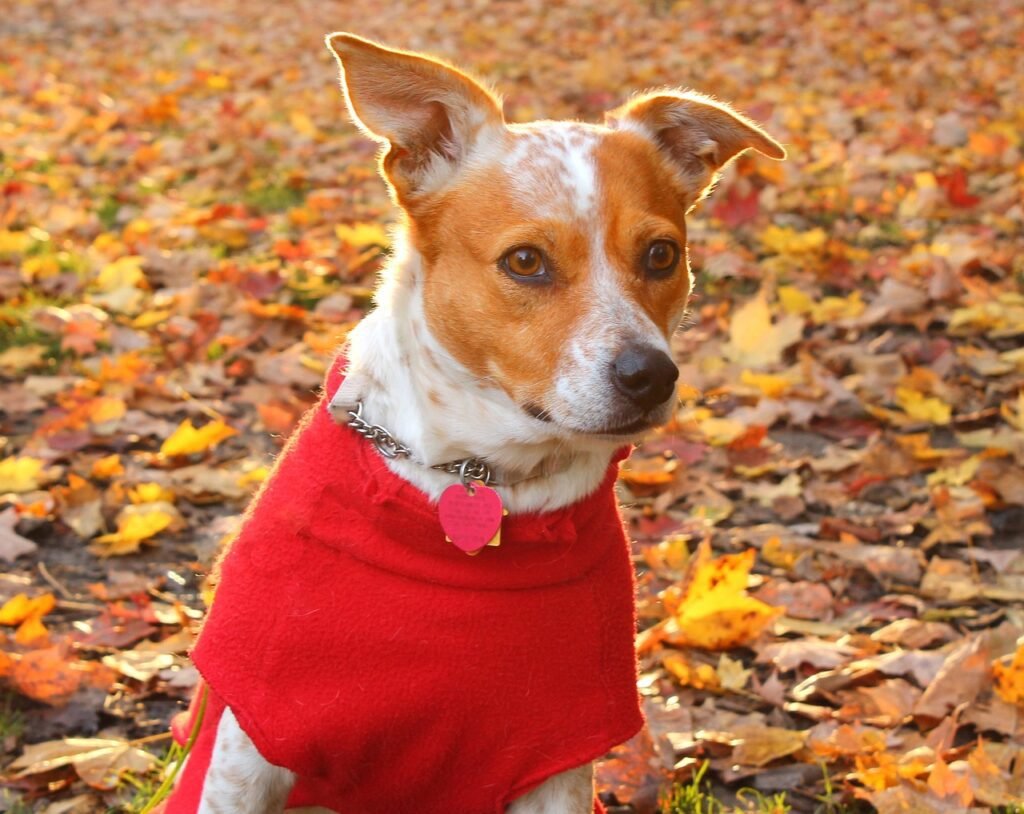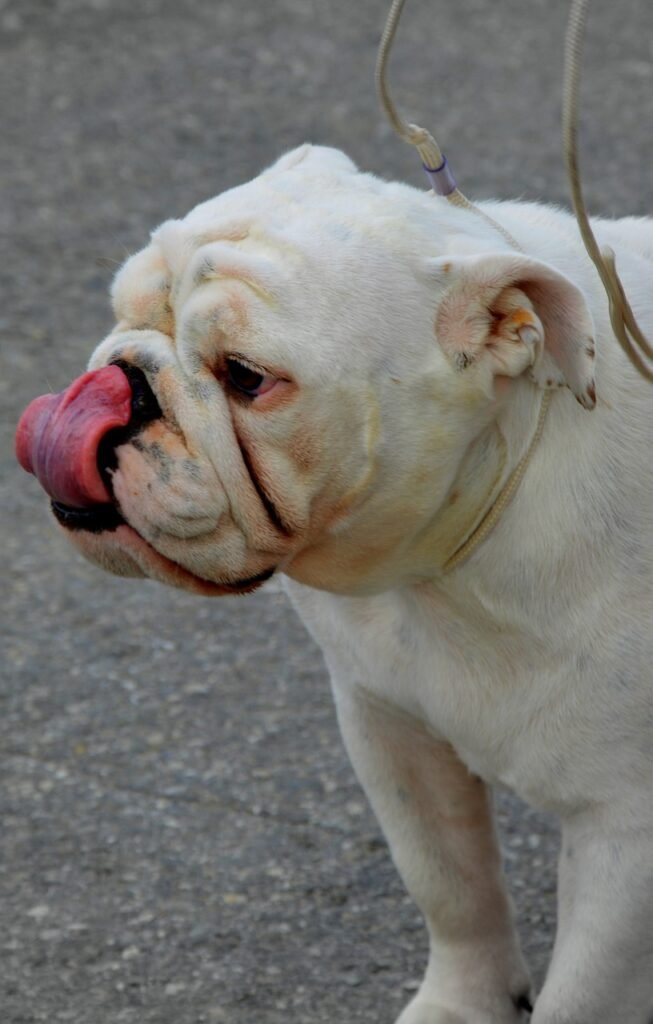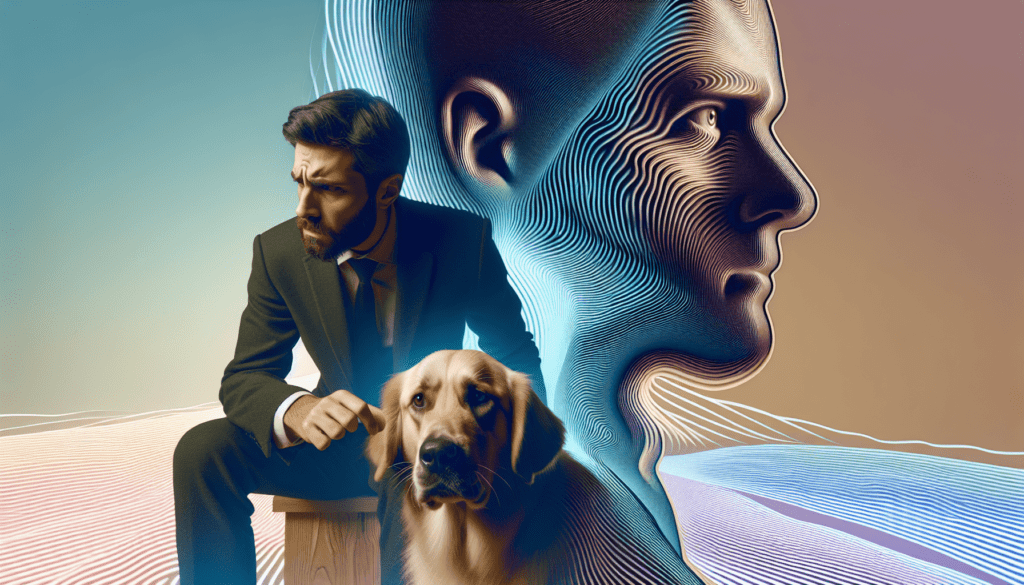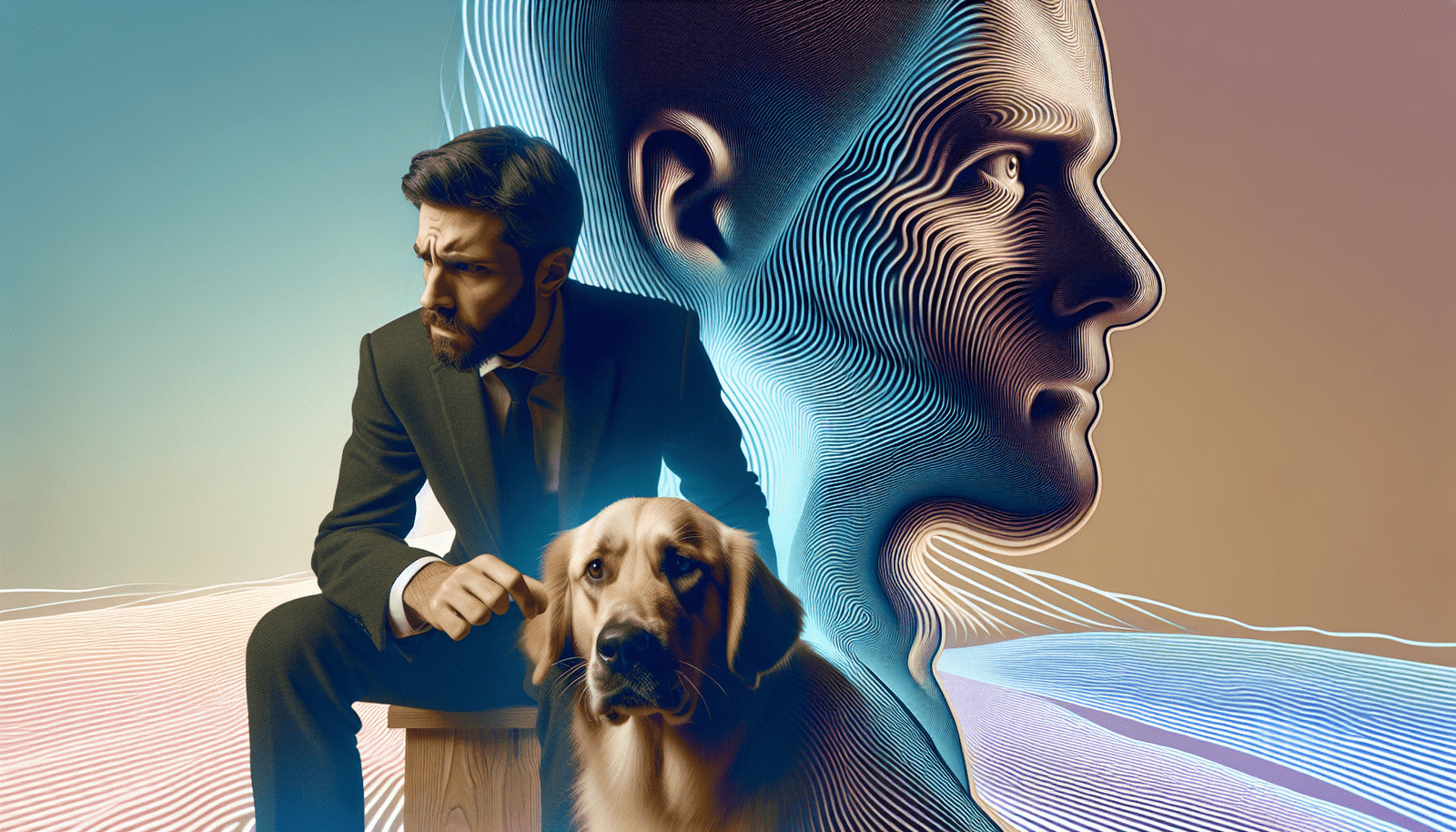Do you ever find yourself feeling anxious and noticing that your dog’s behavior seems to mirror your own unease? It’s not uncommon for our pets to pick up on our emotions, and anxiety can affect our furry friends in more ways than we may realize. In this article, we will explore some simple yet effective strategies that can help you prevent your own anxiety from impacting your dog’s behavior, ensuring a calm and harmonious environment for both of you. So, let’s take a look at some practical tips and techniques that will not only benefit your emotional well-being but also contribute to your dog’s overall happiness and stability.
Understanding the Impact of Owner’s Anxiety on Dog’s Behavior
Recognizing the connection between human and canine emotions
As a dog owner, it is essential to understand the close connection between human and canine emotions. Dogs are highly perceptive animals and can easily pick up on their owner’s emotional state. If you are experiencing anxiety or stress, your dog is likely to sense it and may mirror those emotions. This can manifest in various ways, such as restlessness, excessive barking, destructive behavior, or even aggression. Recognizing this connection is the first step towards effectively managing your dog’s behavior.
Studying research on the influence of owner’s anxiety on dog behavior
Numerous studies have been conducted to explore the impact of an owner’s anxiety on a dog’s behavior. These studies consistently highlight the close link between the emotional well-being of the owner and their dog’s behavior. Research suggests that when owners are anxious or stressed, it can increase their dog’s anxiety levels and contribute to the development of behavioral issues. By studying and understanding this research, you can gain valuable insights into the importance of managing your own anxiety to promote positive behavior in your dog.
Managing Personal Anxiety
Identifying triggers and sources of anxiety
To effectively manage your personal anxiety and prevent it from impacting your dog’s behavior, it is crucial to identify the triggers and sources of your anxiety. Take some time to reflect on situations or circumstances that make you feel anxious. Whether it’s work-related stress, financial worries, or personal relationships, understanding these triggers will help you develop strategies to cope with anxiety and prevent its negative effects on your furry companion.
Seeking professional help and support
If you find that your anxiety is significantly impacting your daily life and well-being, it may be beneficial to seek professional help. Speaking to a therapist or counselor can provide you with valuable tools and coping mechanisms to manage your anxiety effectively. Additionally, joining support groups or seeking guidance from fellow dog owners who have faced similar challenges can provide you with a sense of community and support in your journey to overcome anxiety.
Adopting stress management techniques
Various stress management techniques can help you effectively cope with anxiety and, in turn, positively impact your dog. Practicing deep breathing exercises, meditation, or engaging in activities that bring you joy and relaxation can significantly reduce anxiety levels. It is important to prioritize your own mental health and well-being, as this will translate into a calmer and more stable environment for your dog.

This image is property of pixabay.com.
Creating a Calm and Positive Environment for Your Dog
Maintaining a consistent routine
Dogs thrive on routine, and maintaining a consistent schedule can greatly contribute to their overall well-being. Establishing regular meal times, exercise routines, and rest periods provides a sense of stability and predictability for your dog. This structure helps reduce their anxiety levels and promotes a calm and positive environment.
Providing regular exercise and mental stimulation
Physical exercise and mental stimulation are vital for maintaining a healthy and well-balanced dog. Regular exercise not only helps your dog release pent-up energy but also stimulates their mind and reduces anxiety. Engaging in activities such as daily walks, interactive play sessions, or puzzle toys can provide the necessary physical and mental stimulation that contributes to a calm and positive environment for your dog.
Creating a safe and secure living space for your dog
Creating a safe and secure living space is essential to ensure your dog feels secure and comfortable. Provide your dog with a designated area where they can retreat to when they feel overwhelmed or anxious. This can be a cozy corner with their bed, toys, and a comforting blanket. Additionally, ensure that your home environment is free from hazards and potential stressors that may trigger anxiety in your dog.
Establishing Clear and Consistent Communication
Using positive reinforcement training methods
When it comes to training your dog, positive reinforcement techniques are highly effective in promoting good behavior while strengthening the bond between you and your furry companion. Rewarding desirable behaviors with treats, praise, and affection helps create a positive association and encourages your dog to repeat those behaviors. This communication method based on positive reinforcement fosters a sense of trust and confidence in your dog, reducing anxiety and promoting a harmonious relationship.
Setting clear boundaries and rules for your dog
Consistency is key when setting boundaries and rules for your dog. Establish clear guidelines for acceptable behavior and enforce them consistently. Dogs crave structure and thrive when they understand the expectations placed on them. By setting consistent boundaries, you provide a sense of security and reduce uncertainty, which can contribute to anxiety.
Avoiding punishment-based training techniques
Using punishment-based training techniques can be detrimental to your dog’s emotional well-being and may exacerbate their anxiety. Physical punishments or scolding can lead to fear-based behaviors and damage the trust between you and your dog. Instead, focus on positive reinforcement methods and redirecting unwanted behavior. By avoiding punishment-based techniques, you create a safe and positive environment that promotes trust and confidence.

This image is property of pixabay.com.
Recognizing and Addressing Signs of Anxiety in Your Dog
Understanding common symptoms of anxiety in dogs
Dogs exhibit various signs of anxiety, and it is important to recognize these behaviors to address them effectively. Some common symptoms of anxiety in dogs include excessive barking, pacing, panting, trembling, destructive chewing, or withdrawal. Additionally, your dog may display repetitive behaviors or exhibit signs of aggression when feeling anxious. By understanding these symptoms, you can intervene promptly and implement strategies to alleviate your dog’s anxiety.
Consulting a veterinarian or animal behaviorist for guidance
If you observe signs of anxiety in your dog, consulting a veterinarian or animal behaviorist is highly recommended. They can assess your dog’s situation comprehensively, rule out any underlying medical conditions, and provide guidance specific to your dog’s individual needs. They may recommend behavior modification techniques, training programs, or additional support to help your dog overcome their anxiety.
Implementing strategies to reduce anxiety in your dog
There are several effective strategies to reduce anxiety in dogs. Calming toys or interactive feeders can provide mental stimulation and promote relaxation. Aromatherapy or pheromone products specifically designed for dogs can help create a calming environment. Additionally, creating a designated quiet and peaceful space where your dog can retreat to when feeling anxious can significantly reduce their stress levels. By implementing these strategies, you can emphasize a soothing atmosphere and help your dog feel more secure.
Encouraging Socialization and Exposure to New Environments
Gradually introducing your dog to new people, animals, and situations
Socialization is vital for dogs to develop confidence and adaptability. By gradually exposing your dog to new people, animals, and situations, you help them build positive associations and reduce anxiety in unfamiliar settings. Start with controlled environments and gradually increase the level of exposure, always ensuring your dog feels safe and comfortable. Positive experiences during socialization lay the foundation for a well-adjusted and confident dog.
Building positive associations with new experiences
Creating positive associations with new experiences reinforces your dog’s belief that unfamiliar situations are enjoyable and safe. Use treats, toys, and praise to reward your dog during exposure to new environments, ensuring they associate these experiences with positive outcomes. By focusing on positive associations, you can help alleviate anxiety and encourage a more relaxed response in your dog.
Providing support and reassurance during socialization
During socialization, it is crucial to provide your dog with support and reassurance. Be attuned to their body language and provide comfort if they show signs of anxiety or stress. This can involve gentle petting, talking to them in a calm and soothing voice, or simply being present to provide a sense of security. By being there for your dog, you help build their trust and confidence in unfamiliar situations.

Promoting Relaxation and Calmness in Your Dog
Offering calming tools and techniques, such as puzzle toys or interactive feeders
Calming tools and techniques can significantly help reduce anxiety and promote relaxation in dogs. Puzzle toys or interactive feeders can engage their minds and distract them from stressful stimuli. These activities encourage mental stimulation and provide a focused outlet for their energy, ultimately promoting a sense of calmness.
Using aromatherapy or pheromone products
Aromatherapy and pheromone products specially formulated for dogs can be effective in promoting relaxation. Lavender, chamomile, and other calming scents have been known to have a soothing effect on dogs. Additionally, pheromone products, such as those that mimic the scent of a mother dog, can help create a comforting environment for your furry friend.
Creating a designated quiet and peaceful space for your dog
A designated quiet and peaceful space where your dog can retreat to is essential in promoting relaxation. This space should be free from noise, excessive activity, and any potential stressors. Provide a soft and comfortable bed, calming music or white noise, and dim lighting to encourage a sense of tranquility. By creating a peaceful sanctuary, you give your dog the opportunity to unwind and recharge.
Modeling Calm and Confident Behavior
Being aware of your body language and vocal tone
Dogs are highly attuned to their owner’s body language and vocal tone. Therefore, it is crucial to be aware of your own demeanor and project calm and confident behavior. Speak in a soothing tone, use relaxed body language, and avoid sudden movements or tense gestures. By modeling calm behavior, you demonstrate to your dog that there is no immediate cause for concern, reducing their anxiety levels.
Practicing relaxation techniques in your dog’s presence
Engaging in relaxation techniques such as deep breathing or progressive muscle relaxation can have a positive impact on your dog’s behavior. When you practice these techniques in your dog’s presence, they can pick up on your relaxed state and learn to associate it with their own feelings of calmness. By sharing these moments, you reinforce a relaxed atmosphere and further strengthen the bond between you and your dog.
Avoiding overprotective behaviors that reinforce anxiety
While it is natural to want to protect and comfort your dog when they’re feeling anxious, it is important to avoid overprotective behaviors that reinforce anxiety. Constantly coddling or rescuing your dog from every potentially stressful situation can inadvertently encourage anxious behaviors. Instead, provide support and reassurance while giving them the opportunity to navigate and overcome their anxiety independently. Gradual exposure to stressors promotes resilience and confidence in your dog.

Maintaining a Healthy Lifestyle for Your Dog
Ensuring a balanced diet and regular veterinary care
Maintaining a healthy lifestyle is essential for your dog’s overall well-being and can contribute to their emotional stability. Provide a balanced diet that meets their nutritional needs, ensuring they receive the necessary vitamins and minerals. Regular veterinary check-ups help detect any underlying medical conditions that may contribute to anxiety. By prioritizing their physical health, you create a solid foundation for their emotional well-being.
Addressing any underlying medical conditions or discomfort
If your dog is exhibiting signs of anxiety, it is important to rule out any underlying medical conditions that may be contributing to their behavior. Pain, discomfort, or medical conditions can exacerbate anxiety in dogs. Work closely with your veterinarian to determine if there are any underlying health issues that need to be addressed. Treating these conditions can significantly reduce anxiety and promote a happier and more balanced dog.
Incorporating physical and mental exercise into daily routines
Regular physical and mental exercise is crucial in managing your dog’s anxiety levels. Incorporate activities that cater to their breed and energy level into their daily routine. This can include walks, fetch, agility training, or mentally stimulating games. By providing adequate exercise, you help your dog expend energy in a positive way and prevent the build-up of anxiety.
Building Trust and Bond with Your Dog
Spending quality time together and engaging in activities your dog enjoys
Spending quality time with your dog strengthens the bond between you and enhances their overall well-being. Engage in activities that your dog enjoys, such as playing fetch, going for hikes, or simply cuddling on the couch. By actively participating in activities that bring joy to your dog, you cultivate a deep sense of trust and companionship.
Using positive reinforcement to strengthen the bond
Positive reinforcement is a powerful tool for strengthening the bond between you and your dog. Use treats, praise, and affection to reward desired behaviors and show appreciation for their presence in your life. By consistently reinforcing positive actions, you foster a strong bond built on trust, respect, and mutual understanding.
Allowing your dog to make choices and express preferences
Allowing your dog to make choices and express preferences within safe boundaries is an important aspect of building trust and enhancing their sense of self-confidence. Offer them options when it comes to toys, treats, or even selecting their preferred walking route. By respecting their choices and giving them autonomy, you reinforce their trust in you and create a harmonious relationship.
By following these comprehensive steps, you can prevent your own anxiety from impacting your dog’s behavior. Remember that your well-being is paramount, as it directly influences your dog’s emotional state. Prioritizing self-care and maintaining a calm and positive environment will not only benefit you but also contribute to the overall happiness and well-being of your beloved furry companion.

